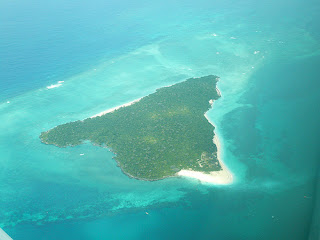Monday, November 26, 2012
Mbudya Island
Mbudya Island (or simply Mbudya) is an uninhabited island in Tanzania, north of the country's capital city, Dar es Salaam and is one of the four islands of the Dar es Salaam Marine Reserve (DMRS).
The island lies close to the beach resort and fishing community of Kunduchi and is reachable by means of a 20 minute motorboat ride crossing from the mainland. It is therefore a popular daytrip for both tourists and Tanzanian residents alike, serving as a location for a variety of leisure activities, including snorkeling, sunbathing and hiking.
Monday, January 30, 2012
The town of Bagamoyo
HISTORY OF BAGAMOYO TOWN
The town of Bagamoyo, Tanzania, was founded at the end of the 18th century. It was (also spelled Bagamojo) the original capital of German East Africa and was one of the most important trading ports along the East African coast. Today the town has about 30,000 inhabitants and is the capital of the District of Bagamoyo, recently being considered as a world heritage site.
 |
| The second church built by the missioners in Bagamoyo |
Bagamoyo was the most important trading entrepot of the east central coast of Africa in the late 19th century. Bagamoyo's history has been influenced by Indian and Arab traders, by the German colonial government and by Christian missionaries.
About 5 km south of Bagamoyo, the Kaole Ruins with remnants of two mosques and a couple of tombs can be dated back to the 13th century, showing the importance of Islam in those early Bagamoyo times.
Kaole Ruins in Bagamoyo, Tanzania
Until the middle of the 18th century, Bagamoyo was a small and insignificant trading center where most of the population were fishermen and farmers. The main trading goods were fish, salt, and gum, among other things.
| The Old Church at Bagamoyo, Tanzania |
In the late 18th century Muslim families settled in Bagamoyo, all of which were relatives of Shamvi la Magimba in Oman. They made their living by enforcing taxes on the native population and by trading in salt, gathered from the Nunge coast north of Bagamoyo. In the first half of the 19th century, Bagamoyo became a trading port for ivory and the slave trade, with traders coming from the African interior, from places as far as Morogoro, Lake Tanganyika and Usambara on their way to Zanzibar. This explains the meaning of the word Bagamoyo ("Bwaga-Moyo") which means "Lay down your Heart" in Swahili. It is disputed whether this refers to the slave trade which passed through the town (i.e. "give up all hope") or to the porters who rested in Bagamoyo after carrying 35 lb cargos on their shoulders from the Great Lakes region (i.e. "take the load off and rest"). Since there is little evidence to support that Bagamoyo was a major slave port (Kilwa, much further south, has earned this status), and that tens of thousands of porters arrived at Bagamoyo annually in the latter half of the 19th century, it is more likely that the name of the town derives from the latter interpretation.
The slave trade in East Africa was officially prohibited in the year 1873, but continued surreptitiously well to the end of the 19th century.
In 1868, Bagamoyo local rulers, known as majumbe, presented the Catholic "Fathers of the Holy Ghost" with land for a mission north of the town, the first mission in East Africa. This caused resistance by the native Zaramo people which was mediated by representatives of Sultan Majid and, after 1870, by Sultan Barghash. Originally the mission was intended to house children who were rescued from slavery, but it soon expanded to a church, a school, and some workshops and farming projects.
But Bagamoyo was not only a trade centre for ivory and copra; it was also a starting point for renowned European explorers. From Bagamoyo they moved out to find the source of the River Nile and explored the African inner lakes. Some of these were Richard Francis Burton, John Hanning Speke, Henry Morton Stanley and James Augustus Grant. Although often believed so, David Livingstone had never been to Bagamoyo in his lifetime.
Only after his death he was laid out in the Old Church's tower (nowadays named Livingston Tower) to wait for the high tide to come in and ship his body to Zanzibar.
Bagamoyo was the German headquarters of German East Africa (first under the auspices of the German East African Company and then the German Imperial Government) between 1886-1891. Dar es Salaam became the new capital of the colony in 1891. The town was apparently the (1895) birth place of SS-Oberführer Julian Scherner. During World War I, in 1916, a British air attack and naval bombardment was launched on Bagamoyo, the Germans were overrun and the German garrison taken.
When the German Empire decided to build a railway from Dar es Salaam into the interior in 1905, Bagamoyo's importance began to decline.
Subscribe to:
Posts (Atom)





















